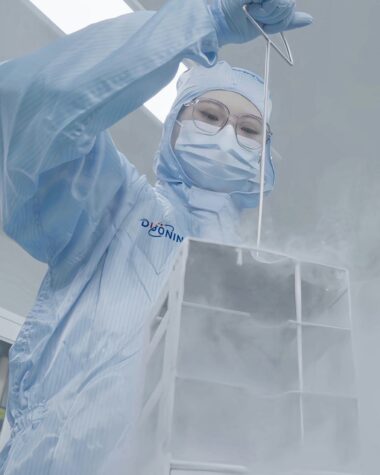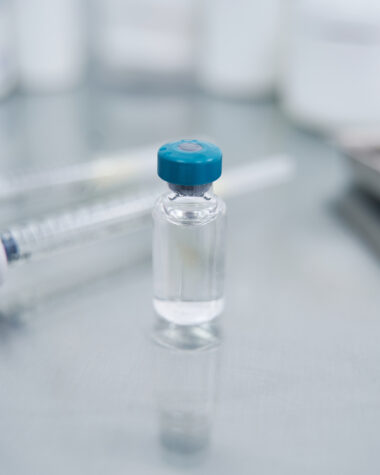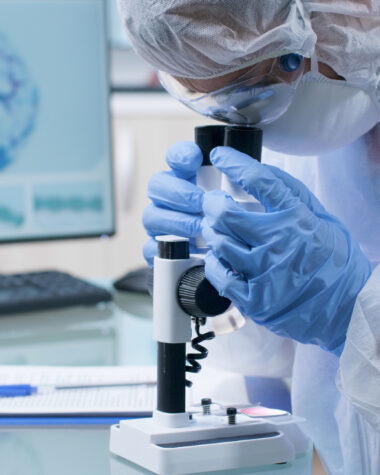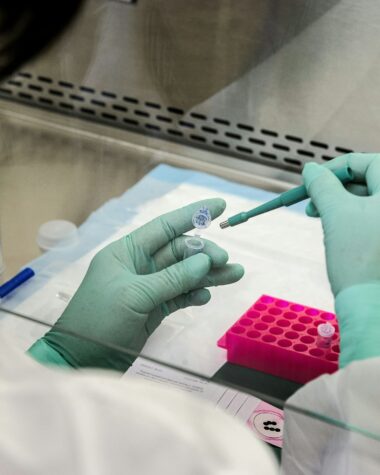Laboratory Corporation of America Holdings (NYSE: LH), commonly known as Labcorp, is one of the world’s leading global life sciences companies, specializing in diagnostic testing, clinical laboratory services, and drug development solutions. Founded in 1978 and headquartered in Burlington, North Carolina, Labcorp has played a central role in shaping modern healthcare by delivering innovative laboratory diagnostics that guide physicians, hospitals, pharmaceutical companies, and researchers in making better clinical and scientific decisions. Over the decades, it has evolved from a regional testing provider into a diversified multinational corporation serving clients in more than 100 countries, making it one of the most trusted names in diagnostics and clinical research worldwide.
Labcorp’s core business is built around its extensive network of clinical laboratories, which perform millions of tests annually across a wide spectrum of medical fields including oncology, infectious diseases, cardiology, women’s health, and genomics. Through this vast infrastructure, the company enables early disease detection, diagnostic confirmation, and personalized treatment planning. Its operations span over 2,000 patient service centers and numerous specialized laboratories that support hospitals, physicians, employers, and government agencies. The company’s technological sophistication allows it to process high testing volumes with precision and speed, integrating artificial intelligence and digital pathology to enhance accuracy and efficiency.
In addition to its diagnostics segment, Labcorp has long been a major player in the biopharmaceutical research and development industry. Until its 2023 spin-off of Fortrea, the company’s former drug development arm, Labcorp served as a crucial partner to the pharmaceutical and biotechnology sectors, providing comprehensive clinical trial management and testing solutions that accelerated drug discovery and approval. Even after the separation, Labcorp continues to collaborate closely with pharmaceutical companies through its laboratory data, genomic testing, and biomarker analysis capabilities, helping bring new therapies to market faster.
The company’s strategic growth has been driven by innovation and acquisition. Over the years, Labcorp has acquired numerous specialized testing and research firms, including Covance, Sequenom, Chiltern, and most recently the assets of Invitae Corporation, expanding its reach in precision medicine and genetic diagnostics. These acquisitions have strengthened Labcorp’s position in the rapidly growing fields of oncology and genomics, enabling it to meet the increasing global demand for advanced diagnostic solutions. Its focus on precision testing, molecular pathology, and next-generation sequencing positions it at the forefront of personalized healthcare.
Labcorp’s mission revolves around improving health and lives through science. Its integrated data-driven approach connects diagnostics, drug development, and healthcare delivery into a unified platform that supports physicians and researchers alike. This combination of scale, scientific expertise, and innovation allows the company to provide faster, more accurate insights for patients and to help healthcare systems worldwide make more informed and efficient decisions.
Today, Labcorp employs more than 60,000 people globally and remains a key player in the future of precision medicine. The company continues to invest heavily in automation, artificial intelligence, and molecular diagnostics to maintain its leadership in clinical testing while driving greater affordability and accessibility for patients. By combining its global infrastructure with a commitment to scientific excellence and ethical innovation, Labcorp has cemented its role as a cornerstone of the healthcare ecosystem — bridging the gap between laboratory science and real-world clinical outcomes.
At present, Labcorp’s dividend appears well-covered by earnings. Its payout ratio sits at roughly 22%, leaving ample room for reinvestment in the business. Over the next year, earnings per share (EPS) are forecasted to grow by more than 82%, suggesting that on paper, the company’s income generation comfortably supports its shareholder distributions. However, this EPS expansion is partly driven by temporary factors, including post-pandemic normalization and accounting adjustments from acquisitions, rather than strong organic revenue growth or margin expansion. This raises questions about whether such earnings power is sustainable once one-off effects fade and operational headwinds intensify.
Limited Dividend Track Record and Reliability Concerns
Another concern is Labcorp’s short dividend-paying history. The company has only been paying dividends for three years, a relatively brief period for investors seeking long-term income stability. During that time, the annual dividend payment has remained largely flat at around $2.88 per share, with no significant increases. While this indicates prudence, it also reflects limited commitment to progressive dividend growth — a key factor in long-term shareholder value creation.
Moreover, the dividend yield remains modest relative to peers in the healthcare and diagnostics space, particularly given Labcorp’s size and balance sheet strength. The company’s dividend payout has not grown meaningfully, even as earnings per share have climbed at an average rate of 20% annually over the past five years. This divergence suggests management prefers to retain earnings for reinvestment, but without clear visibility into high-return growth initiatives, investors may begin questioning whether Labcorp’s capital allocation strategy is truly shareholder-friendly.

CHECK THIS OUT: Tiziana (TLSA) Surges 143% in 2025 and Immuneering (IMRX) Reports 86% 9-Month Survival in Pancreatic Cancer.
Earnings Growth Masking Structural Weakness
While Labcorp’s EPS growth appears impressive, the company’s fundamentals show signs of strain. The diagnostics industry is entering a slower growth phase as COVID-era testing demand normalizes and payer reimbursement pressure intensifies. Labcorp’s core testing business continues to face pricing compression, driven by both government and commercial insurers seeking to lower diagnostic costs.
Additionally, the company’s recent acquisition activity — including the $239 million purchase of Invitae’s assets — introduces integration risk and uncertain returns. The expected $275–$300 million annual revenue contribution from Invitae may fail to offset declining margins if operational synergies take longer to materialize or customer attrition occurs. These risks could erode the earnings cushion that currently supports Labcorp’s dividend safety narrative.
Even more concerning, the company’s operating margins remain under pressure due to inflationary trends in labor, logistics, and reagent supplies. With healthcare institutions facing tighter budgets, non-urgent diagnostic testing volumes could slow in 2025, further reducing the incremental cash flow Labcorp needs to sustain its dividend growth potential.
Regulatory Pressures and Competitive Threats
Labcorp also faces mounting regulatory challenges that could hinder its long-term profitability. The U.S. Food and Drug Administration’s move to tighten oversight on lab-developed tests (LDTs) adds compliance burdens and potential cost increases. These regulatory headwinds could affect Labcorp’s flexibility to innovate or launch new diagnostic assays quickly, ultimately constraining its competitive advantage against more agile or specialized testing firms.
Meanwhile, competition from emerging precision-medicine companies and low-cost regional laboratories threatens Labcorp’s pricing power. As newer entrants adopt automation and AI-driven testing platforms, Labcorp’s legacy infrastructure could become a cost disadvantage. The company’s scale provides stability but not necessarily agility — a key differentiator in an evolving diagnostics landscape where turnaround time and innovation often outweigh size.
Dividend Sustainability and Market Perception
Despite its current coverage ratio, Labcorp’s dividend safety could come under scrutiny if earnings growth slows. Investors must recognize that dividend sustainability is not just about payout ratios, but also about consistency in free cash flow generation. If inflationary costs and integration expenses weigh on cash conversion, Labcorp might have to reallocate funds away from shareholder returns toward maintaining operational efficiency.
Furthermore, Labcorp’s limited history of dividend increases makes it less attractive to income-focused investors compared to longer-tenured dividend aristocrats in healthcare such as Abbott Laboratories or Johnson & Johnson. Without consistent dividend hikes, Labcorp risks being perceived as a stock that prioritizes acquisitions over shareholder rewards — a perception that could cap valuation multiples even if fundamentals remain stable.
Market Overconfidence and Valuation Fragility
The stock’s current valuation also leaves little room for disappointment. With a forward price-to-earnings ratio near 17x, Labcorp trades at a premium to the broader diagnostics industry average. This valuation embeds expectations of continued double-digit earnings growth and operational improvement, both of which could falter under pressure from reimbursement reform, macroeconomic headwinds, and integration challenges.
Analyst consensus currently implies upside based on earnings normalization and resilient testing demand, but if EPS growth moderates or margins contract, the stock could quickly re-rate downward. Given that much of Labcorp’s bull case hinges on aggressive earnings projections, any deviation from expectations — especially around cost control or revenue mix — could trigger a sharp correction.
The Long-Term Bearish Case
In summary, while Labcorp presents itself as a stable, dividend-paying healthcare leader, its story is less solid than it appears. The company’s short dividend track record, exposure to reimbursement risk, rising cost pressures, and potential regulatory burdens all pose structural threats to long-term stability. The lack of meaningful dividend growth and increasing reliance on M&A for revenue expansion highlight a fragile foundation beneath its otherwise healthy financial statements.
As the market prices in optimism over EPS growth and dividend coverage, investors should remain cautious. Labcorp’s future could hinge on navigating cost inflation, integration challenges, and competitive disruptions — and any stumble along the way could lead to valuation compression and weaker total returns. For income investors seeking long-term dependability, Labcorp may not yet offer the consistency or proven track record that true dividend stalwarts provide.
READ ALSO: Saudi Arabia Wants CEL-SCI (CVM)’s Multikine Now! and Aligos Therapeutics (ALGS) Doubles Cash to $122.9M.








